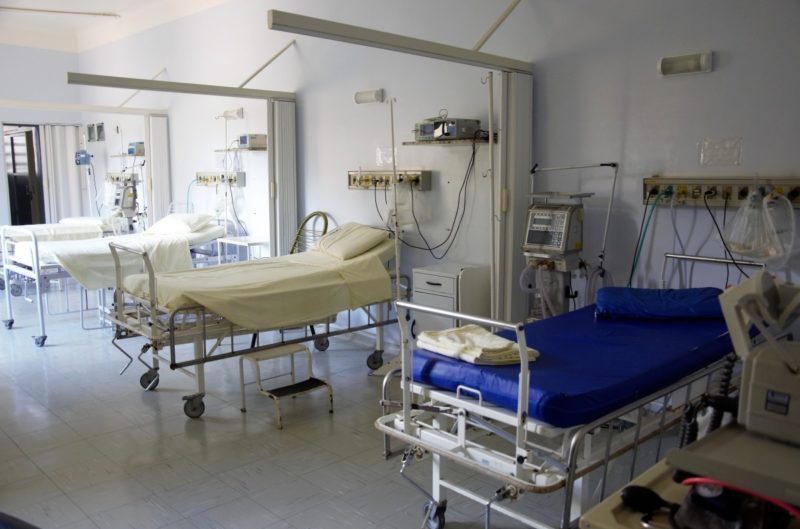Are you wondering what size mattress pad for hospital bed? What are mattress pads made of? How do these things work?
You’ll find out as you read along.

Well, if you find it difficult to sleep on a hospital bed, you always have an option to add a mattress pad to it.
With this, you’re sure to have an extra cushion to your bed and prevent you from spills.
Without further ado, read and find out!
Mattress Pads: How Do They Work?
What precisely are mattress pads?
Mattress pads are perfect for anyone who wants a little more comfort from their bed.
The main purpose of a mattress pad is to make the bed more comfortable.
It normally sits between the sheets and covers the top of the bed.
In most cases, newer beds are more comfortable and do not require a mattress pad.
But then, it’s okay to have one for protection purposes, especially if you’re using a hospital bed.
It can be hypoallergenic, waterproof, and well-cushioned, making it an excellent investment.
If you need extra support or comfort from your mattress for medical reasons, mattress pads are great.
My friends, if you’re hospital bed at home is already outdated, you can maximize its comfort with the use of a mattress pad.
In this manner, you can also save money by not having to buy a new one.
Finally, a mattress pad can help to lessen the noise of your bed.
What Are The Different Types Of Mattress Pads?
Mattress pads come in a variety of fabrics and are designed to provide comfort and protection.
The following are the several categories to take note of:
#1. Cotton
Cotton mattress pads are available in the market.
There’s no doubt why these pads are prominent and widely used, thanks to their durability and plushness.
They have a long lifespan and are cost-effective.
On the other hand, Cotton may not be as resistant to stains and spills as other fabrics.
#2. Wool
Mattress protectors can be made of wool too.
These pads are more breathable and softer, wicking sweat away from the body.
Undoubtedly, wool is a sought-after fabric produced by sheep.
On the other hand, wool pads may be challenging to keep clean; you can’t machine wash this kind of fabric.
Wool mattress pads, like cotton, are unable to keep spills and stains off of your mattress.
#3. Feather-filled
These pads are made from geese or duck feathers.
They’re also fluffy, warm, and comfortable.
They are, however, both expensive and inefficient when it comes to preventing spills on your bed.
#4. Fiber
Fiber mattress pads are, of course, made of fiber.
This type of mattress pad uses fiberfill from different materials like polyester, rayon, and down alternatives.
These pads may be difficult to maintain; you cannot machine wash this kind of fabric.
#5. Latex
Natural or synthetic latex, or a mixture of the two, can be used to make them.
Latex pads are sure to provide you comfort and bounce you expect a bed can give; this depends on the thickness of pads, though.
But then, these are quite expensive and hard to maintain, just like other mattress pads.
Fortunately, when used in conjunction with latex mattresses, these cushions offer some spill and wear protection.
#6. Memory foam
Memory foam mattress protectors may also be available out there.
Knowing that it adds a lot of plushness to your bed is reassuring.
Like other fabrics used for a mattress pad, a memory foam mattress pad is not machine washable and has no stain resistance.
What Are Mattress Pads?
What exactly are mattress toppers, and how do you put them to good use?
Mattress toppers are a type of mattress pad similar to a higher-end mattress pad, both of which serve the same purpose- to provide comfort.
Mattress toppers are a thick piece of material that sits on top of your mattress and typically have straps.
Mattress Toppers Vs. Mattress Pads
The following are the differences between pads and toppers to be aware of.
The objective
Mattress toppers add comfort to the bed, while mattress pads keep contaminants out.
Materials used
Mattress toppers are typically made of different materials, whereas mattress pads are typically made of polyester or cotton.
What size mattress pad for a hospital bed
Mattress toppers go on top of the mattress, whereas mattress pads are meant to be tucked beneath a bedsheet.
So, what size mattress pad for hospital bed?
It depends on the size of the bed you’ve got.
Cushion
A mattress topper can change the overall feel of the mattress while also increasing the surface’s comfort.
Mattress pads have a slight effect on how the bed feels overall.
Life expectancy
Mattress pads can last several years if properly cared for, whereas toppers are typically durable materials.
Cost
Mattress pads are available in a range of prices, ranging from $75-$400.
Mattress pads, on the other hand, are far more affordable, costing less than $100.
The advantages and disadvantages of mattress pads
Mattress pads provide the added benefit of shielding the mattress from stains, spills, and sweat.
They’re also less expensive to buy and keep up with.
They are, however, more prone to damage than mattress toppers and give less comfort.
The advantages and disadvantages of a mattress topper
A topper can drastically modify the feel of your present mattress by adding a soft layer of comfort for relief.
For those who sleep on their stomach or side, toppers are also an alternative.
Unfortunately, they are costly, and some producers utilize latex and feathers, which may cause allergies.
It’s A Wrap!
Finally, a conclusion has been reached!
Now, you’ve figured out what mattress pads are and what size mattress pad for hospital bed, and they’re wonderful.
One thing is sure; you can get optimum comfort when using it.
